Anatomy of a frogfish: New book explores world of fishes with arms, legs
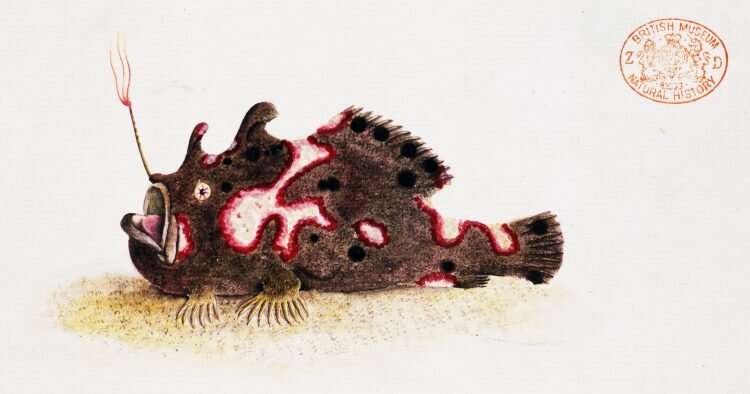
Any old fish can swim. But what fish can walk, scoot, clamber over rocks, change color or pattern and even fight? That would be the frogfish.
The latest book by Ted Pietsch, UW professor of emeritus of aquatic and fishery sciences, explores the lives and habits of these unusual marine shorefishes. "Frogfishes: Biodiversity, Zoogeography, and Behavioral Ecology" was published in March by Johns Hopkins University Press.
Pietsch, who is also curator emeritus of fishes at the Burke Museum of Natural History and Culture, has published over 200 articles and a dozen books on the biology and behavior of marine fishes. He wrote this book with Rachel J. Arnold, a faculty member at Northwest Indian College in Bellingham and its Salish Sea Research Center.
These walking fishes have stepped into the spotlight lately, with interest growing in recent decades. And though these predatory fishes "will almost certainly devour anything else that moves in a home aquarium," Pietsch writes, "a cadre of frogfish aficionados around the world has grown within the dive community and among aquarists." In fact, Pietsch said, there are three frogfish public groups on Facebook, with more than 6,000 members.
UW Notebook caught up with Pietsch for a conversation about his book and the unusual family of fishes it describes.
First, what is a frogfish?
Ted Pietsch: A member of a family of bony fishes, containing 52 species, all of which are highly camouflaged and whose feeding strategy consists of mimicking the immobile, inert, and benign appearance of a sponge or an algae-encrusted rock, while wiggling a highly conspicuous lure to attract prey.
This is a fish that "walks" and "hops" across the sea bottom, and clambers about over rocks and coral like a four-legged terrestrial animal but, at the same time, can jet-propel itself through open water. Some lay their eggs encapsulated in a complex, floating, mucus mass, called an "egg raft," while some employ elaborate forms of parental care, carrying their eggs around until they hatch.
They are among the most colorful of nature's productions, existing in nearly every imaginable color and color pattern, with an ability to completely alter their color and pattern in a matter of days or seconds. All these attributes combined make them one of the most intriguing groups of aquatic vertebrates for the aquarist, diver, and underwater photographer as well as the professional zoologist.
That's interesting about their changing color and pattern. What determines the shade or pattern the fish adopts, and how quickly?

T.P.: The ability to change coloration varies enormously among species. The Sargassum Frogfish, for instance, can alter hue and pattern almost instantly, especially in response to stimulation, like courtship, spawning behavior, or aggression between competing males for which this species is famous—they fight until death!
Other frogfishes are more limited in terms of the rate of change, but most are able to take on a nearly full range of coloration from drab to highly colorful within a period of a few days, weeks, or months, usually in response to their surroundings, that is, to better hide themselves among rocks, coral, or sponges, etc. In many species radical chromatic variety and change seems almost infinite.
Do frogfish use their appendages for other purposes as well?
T.P.: The "arms" and "legs" are used for walking and climbing over rocks and coral, but they also serve as planing devices when swimming in open water, for steering and braking.
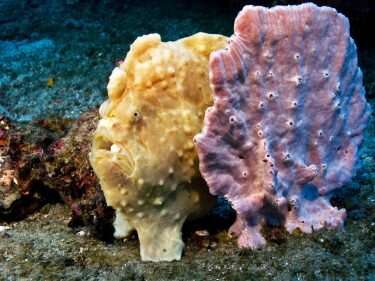
Where do frogfishes live?
T.P.: Frogfishes are found just about everywhere in shallow-water, tropical and subtropical habitats of all major seas and oceans of the world, except the Mediterranean Sea, and why not the latter, no one seems to know for sure.
Who discovered the frogfish, and when?
T.P.: Knowledge of frogfishes began to accumulate sometime prior to the year 1630, when an unknown Dutchman made a drawing of a strange fish that was observed on the coast of Maranhão, northeastern Brazil.
A woodcut was made from this drawing and published in 1633 under the name Pira Vtoewah, forma monstrosa.
Somewhat later, and on the other side of the world, another Dutchman, Captain Willem de Vlamingh, and his crew aboard the frigate Geelvinck were searching for survivors of a shipwreck off the coast of Western Australia. On the morning of December 29, 1696, amid discoveries of rats as big as common house cats (now known to be wallabies) and tracks of tigers and other ferocious beasts (dingoes), there was observed a remarkable fish, "about two feet long, with a round head and a sort of arms and legs and even something like hands." No doubt this was a frogfish, the earliest published mention of a frogfish from the Indo-Pacific region.
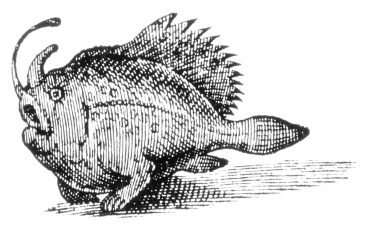
How did your work bring you to study frogfishes?
T.P.: My interest in fishes began a long time ago, when, as a first-year graduate student at the University of Southern California, I was asked by my major professor to take part in shipboard collecting trips off the coast of Southern California. I thought I wanted to study snakes, but, when it came to fishes, I was immediately overwhelmed with the tremendous diversity of forms and their amazing adaptations—I forgot about snakes and never looked back. I became especially interested in fishes that lie-in-wait and attract their prey using luring devices, thus frogfishes became my ideal research animal.
As you note in the introduction, a lot of new information about frogfishes has accumulated since the first publication of this work, in 1987. What are some of the improvements and updates in this greatly revised new edition?
T.P.: Over the past three decades, an enormous amount of new information about frogfishes has accumulated and all of it is addressed in this thoroughly revised edition: new species have been discovered, described, and formally named; geographic distributions have been expanded as marine habitats and ecosystems have been more thoroughly explored; new molecular techniques and greater phylogenetic understanding have resulted in new and sometimes unexpected perspectives on evolutionary relationships; and new insights into feeding, locomotion, and especially reproductive behavior have been observed and recorded through an ever-expanding, worldwide interest in underwater research by students and professional scientists as well as aquarists and recreational divers.
While 30 years ago it was difficult to find high-quality color photographs of frogfishes, state-of-the-art digital camera equipment and talented photographers everywhere have flooded the Internet with a multitude of astonishing images, both stills and videos.
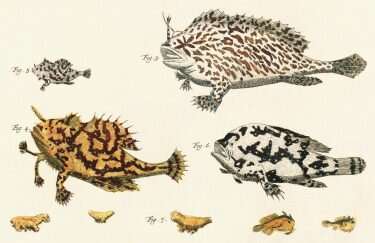
You write that conservation is addressed in this edition—what are the conservation concerns regarding the frogfish?
T.P.: Thirty years ago, it did not occur to us to include a discussion of conservation, but it appears in this volume. Characterized by low population densities, restricted and patchy geographic distributions, small home ranges, and limited mobility, frogfishes are particularly vulnerable to population declines and risk of extinction due to competition from invasive species, over-collecting by aquarists and the tropical fish trade, climate change (global warming), and habitat degradation. The book looks at efforts to address these threats.
Can you talk a bit about the extensive research that went into this volume?
Work toward completion of this volume has been on-going for decades. The most time-consuming part of it, but perhaps also the most enjoyable, was extensive travel to all the great museum collections around the world that contain preserved specimens of frogfishes.
Just under 5,000 specimens were examined, their structure evaluated, measured, parts counted, and recorded. We also recorded who, when, where and how each specimen was collected. This edition also required an exhaustive review of the published literature over the past 30 years.
Last, but by no means least, were the incredible contributions from museum curators, aquarists, divers, and underwater photographers who generously provided information and photographs. Altogether, some 175 photographers contributed images, more than 7,000 in total, each asking for nothing more than a note of thanks. This volume would be nothing without them.
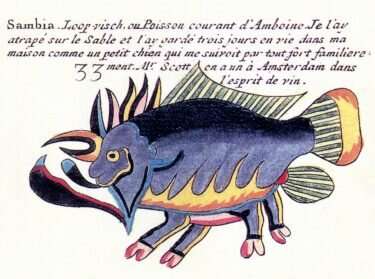
What is the audience for this book?
Our intended audience is the scientific community. Ichthyologists and herpetologists, marine ecologists, evolutionary biologists, systematists, behaviorists, biogeographers, conservationists, science historians, commercial tropical fish traders, public and private aquarists, scuba divers, underwater photographers, and natural history enthusiasts in general.
Provided by University of Washington





















